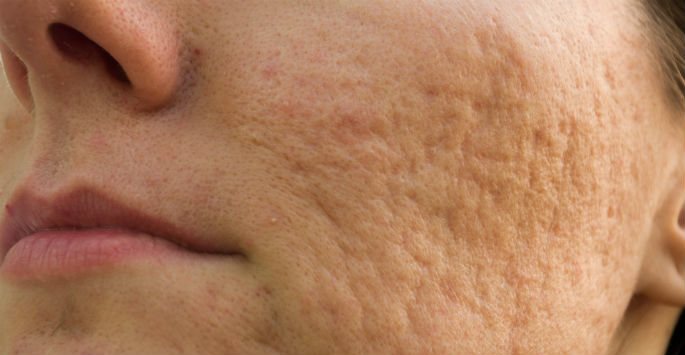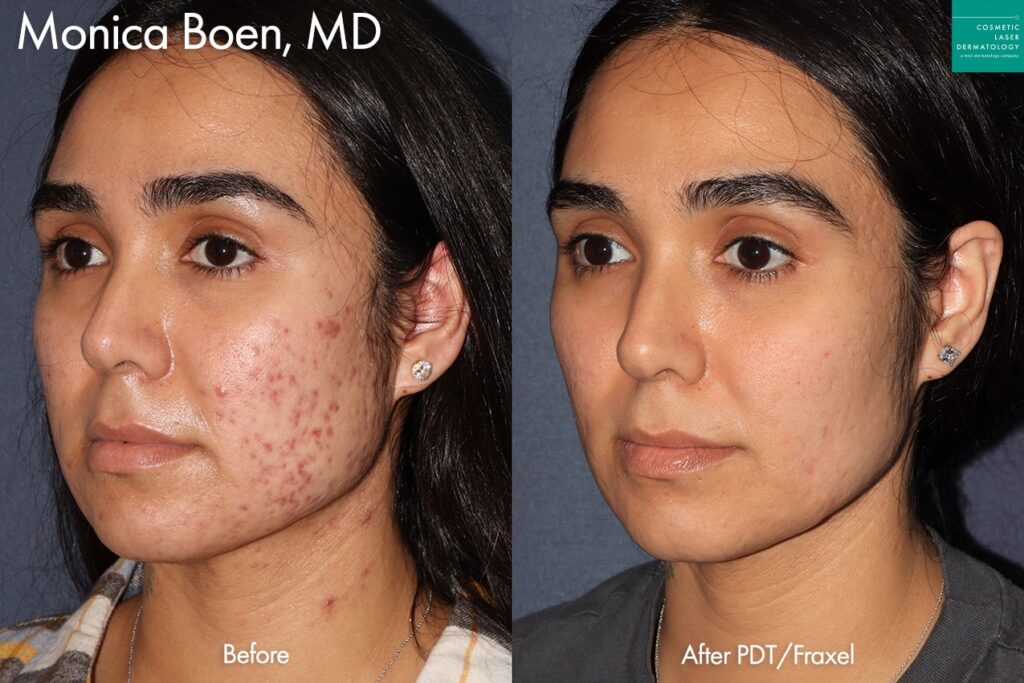Exploring Skin Problem: Identifying and Treating Acne Scars for Healthier Skin
Acne marks stand for a significant concern for individuals seeking to preserve healthy skin, as they can impact both look and self-worth. Recognizing the numerous kinds of marks, from atrophic to hypertrophic, is essential for identifying proper treatment choices. While expert treatments like chemical peels and microneedling can be efficient, the value of customized care plans can not be overstated. Preventative procedures play a vital function in lessening future scarring. As we check out these aspects, one should consider how the right strategy can bring about transformative outcomes.
Recognizing Acne Marks

The body's natural recovery procedure can result in either atrophic scars, which show up as clinical depressions in the skin, or hypertrophic scars, which are raised and result from overflow of collagen. In addition, the psychological toll of acne scars must not be taken too lightly; many individuals report feelings of humiliation, anxiousness, and lowered self-esteem. This emotional problem can influence social communications and overall quality of life.
Attending to acne marks calls for a thorough understanding of their development and impact. Awareness of the capacity for long-lasting repercussions connected with unattended marks can inspire individuals to seek suitable treatments. Early intervention and effective management techniques can considerably improve skin appearance and enhance psychological strength, stressing the relevance of recognizing the intricacies surrounding acne scars.
Kinds Of Acne Marks
Acne marks can be classified into distinct types, each showing one-of-a-kind features and needing particular treatment approaches. skin rejuvenation treatments. The main sorts of acne scars consist of atrophic, hypertrophic, and keloid marks

Hypertrophic marks, on the other hand, are raised above the skin degree and are the outcome of excessive collagen manufacturing during the healing procedure. They commonly remain within the limits of the initial acne lesion. Keloid scars are comparable yet extend beyond the initial injury site, developing bigger, elevated locations that can be itchy or painful.
Understanding these kinds of marks is important for choosing ideal therapy options. Different scars may respond better to specific therapies, such as laser treatments, fillers, or surgical treatments, stressing the relevance of a customized approach to acne scar management.
Identifying Your Marks
Acne scars normally drop into two classifications: hypertrophic and atrophic marks. These can further be categorized right into ice-pick marks, boxcar marks, and rolling marks, each exhibiting distinct attributes and calling for various approaches for assessment.
Hypertrophic scars, on the other hand, are increased and happen due to excessive collagen production during the healing process. Acknowledging the certain attributes of your marks-- such as width, texture, and depth-- is essential for correct recognition (skin rejuvenation treatments). In addition, take into consideration the circulation of marks throughout your skin, as this can show the intensity and period of the acne condition
Engaging with a dermatologist can offer valuable insights right into the nature of your scars, assisting in the distinction in between different types. A thorough understanding of your marks will inevitably cause a much more tailored and reliable therapy plan, guaranteeing a clearer and much healthier skin tone.
Treatment Alternatives Readily Available
Determining the specific type of acne marks existing on your skin lays the groundwork for exploring reliable treatment options. Usual types of acne marks consist of atrophic (depressed), hypertrophic (increased), and post-inflammatory erythema.
For atrophic marks, choices such as chemical peels, microneedling, and laser resurfacing are widely made use of. Chemical peels make use of acids to eliminate the external layer of skin, promoting brand-new cell growth.
Hypertrophic scars can be treated with corticosteroid shots to squash the scar or laser therapy to reduce soreness and boost appearance. Silicone gel sheets and stress dressings may likewise aid in managing elevated marks.
Furthermore, facial fillers can temporarily fill out depressions from atrophic marks, while surgical excision may be ideal for severe situations. Each therapy option has its considerations and benefits, making it important to consult with a skin doctor. They can offer individualized referrals based on the type and intensity of your marks, as well as your skin type and general wellness.
Tips for Avoidance
Effective prevention methods can dramatically reduce the possibility of establishing acne marks. The initial read what he said action is to keep a consistent skincare routine that includes gentle cleansing, exfoliation, and moisturizing. Using non-comedogenic products helps avoid stopped up pores, which can worsen acne. In addition, including topical therapies having salicylic acid or benzoyl peroxide can effectively minimize and manage helpful site breakouts inflammation.
Staying clear of need to select or stand out acne lesions is essential, as this can result in deeper skin damage and increase the risk of scarring. Rather, consider using a cold compress or over-the-counter treatments to reduce swelling and soreness.
Sun defense is an additional essential facet of avoidance; ultraviolet (UV) rays can dim marks and prevent the recovery procedure. Applying a broad-spectrum sun block with at the very least SPF 30 daily can safeguard the skin and advertise even healing.
Last but not least, preserving a balanced diet abundant in antioxidants, minerals, and vitamins supports skin wellness and healing. Remaining moisturized and managing stress and anxiety levels can additionally play a considerable role in lowering acne flare-ups. By carrying out these strategies, people can significantly minimize their possibilities of creating acne scars.
Verdict
In conclusion, understanding and determining acne marks is vital for effective therapy and attaining healthier skin. Various types of acne scars, including hypertrophic and atrophic marks, demand specific interventions tailored to specific needs.
The body's natural healing process can result in either atrophic scars, which appear as depressions in the skin, or see this website hypertrophic scars, which are raised and result from overproduction of collagen. They are further divided into 3 subtypes: ice pick scars, boxcar scars, and rolling scars. Acne scars generally fall into 2 groups: hypertrophic and atrophic scars. These can further be classified right into ice-pick marks, boxcar marks, and rolling marks, each displaying unique qualities and requiring different approaches for assessment.
Numerous types of acne scars, consisting of atrophic and hypertrophic marks, demand specific treatments customized to specific demands.
Comments on “Just How to Deal With Acne Scars: Proven Approaches for a Remarkable Skin”